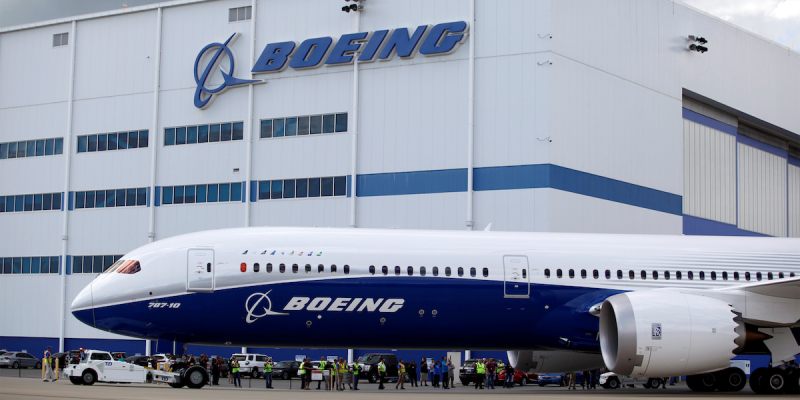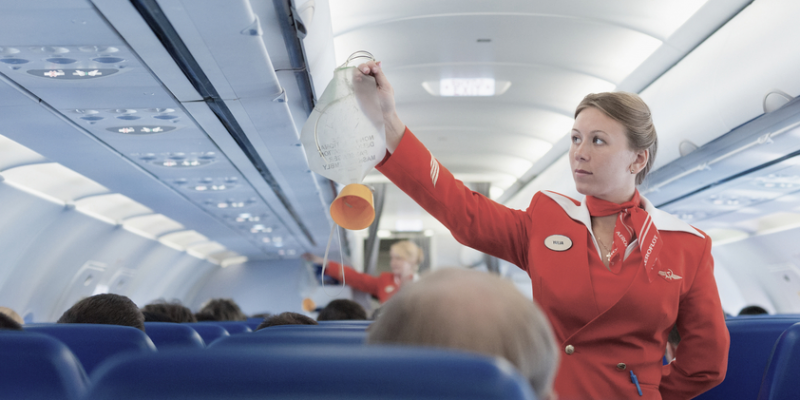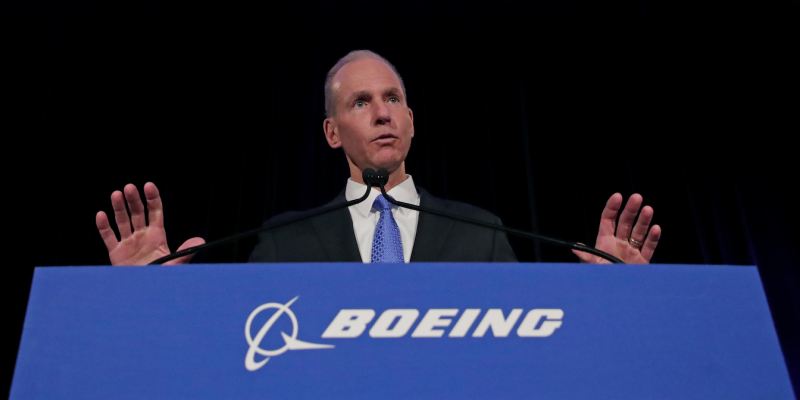- John Barnett, a former quality-control engineer at Boeing, told the BBC he had found faulty emergency oxygen bottles while working on the 787 Dreamliner in 2016.
- He said Boeing stonewalled his complaint. He is now suing the company, claiming it sidelined him and pushed him to retirement. The company has denied those allegations.
- He also spoke of workers at his plant in South Carolina being under intense pressure to meet tight deadlines and keep costs low, which he says jeopardized the quality of the planes.
- A Boeing representative told Business Insider that all individual oxygen bottles were checked multiple times before delivery and going into service and would be replaced if found faulty.
- Boeing has also faced multiple employee complaints regarding its culture and plane quality as 737 Max planes remain grounded worldwide.
- Visit Business Insider’s homepage for more stories.
Boeing has been hit by another whistleblower complaint, this time from a former engineer who says faulty systems in the 787 Dreamliner could leave passengers without oxygen in the event of an emergency.
John Barnett, a former quality-control engineer at the manufacturer’s South Carolina plant, told the BBC in a Wednesday report that while working on the plane he had found faulty emergency oxygen bottles and that managers stonewalled further investigations into the issue.
He worked at the Boeing plant in North Charleston for 32 years and retired in March 2017, the BBC reported. He is suing Boeing, claiming it hampered his career over his complaints about quality issues, allegations the company denies, according to the BBC.

Here's a rundown of his allegations, as reported by the BBC on Wednesday:
- In 2016, he found that oxygen bottles in the 787 Dreamliner emergency oxygen systems were not discharging when they were meant to.
- These systems are deployed when there a sudden drop in cabin pressure. Masks are meant to drop from the ceiling, which then supply passengers with oxygen from a gas cylinder to prevent hypoxia - the loss of oxygen to the body that can lead to organ damage within minutes.
- Barnett underwent subsequent tests and found that out of 300 oxygen systems, 75 did not deploy properly. This is a 25% fail rate.
- Boeing managers stonewalled further investigations into the faulty systems.
- When he complained about the oxygen systems to the Federal Aviation Administration, it took no action, saying it couldn't because Boeing said it was already working on the issue.
A Boeing spokeswoman told Business Insider on Wednesday that all individual oxygen bottles were tested multiple times before delivery and before entering service and that "if at any time the system or a subcomponent does not pass the test, it does not remain on the airplane - it is replaced."
The representative added that FAA inspectors were located at all Boeing final-assembly facilities and that all its planes "go through multiple safety and test flights, as well as extensive Boeing, FAA, and airline inspections before they leave our factory" and before passenger flights.
She also declined to comment on Barnett's allegations of the company's stonewalling his complaints, saying the company did not comment on the substance or existence of internal complaints. She added, however, that Boeing offered employees "a number of channels for raising concerns and complaints and has rigorous processes in place."
A Federal Aviation Administration representative did not respond to Business Insider's request for comment on Barnett's allegations, but the FAA has previously said in a statement: "Safety is the FAA's top priority. We thoroughly investigate whistleblower complaints and take action if the allegations are substantiated."
Earlier this month, The Seattle Times reported that the Russian carrier Aeroflot formally canceled an order for 22 787 Dreamliner aircraft, valued at $5.5 billion.

Barnett also presented to the BBC a culture of constantly being pressured to meet production schedules and keep costs down, suggesting that it had jeopardized the quality of Boeing planes.
He said the South Carolina plant allowed numerous defective parts to be "lost" while tracking it through the production process. The FAA upheld this allegation and noted that at least 53 parts had been lost, and it ordered Boeing to take remedial action, the BBC reported, adding that Boeing said it had "fully resolved" the issue.
Barnett told The New York Times in April that during his tenure he found clusters of sharp metal pieces hanging over wiring that commands flight controls. If those shavings ever penetrated the wires, the result could be "catastrophic," he told The Times.
He added that when he complained, Boeing refused to investigate and moved him to another part of the plant.
Barnett also told the BBC that workers under pressure at his plant fitted to the 787 Dreamliner substandard parts from scrap bins - to the knowledge of a senior manager in at least one case.
His accusations are consistent with an internal Boeing survey, conducted in November 2016, that found that 29% of engineers felt pressure from managers to certify plane systems they designed themselves - suggesting an atmosphere of rushing through the design and certification process. The Wall Street Journal first reported on the survey.

Boeing has also faced multiple employee complaints regarding its culture and plane quality. These complaints ramped up after two deadly crashes by 737 Max planes, which together killed 346 people.
In July, a former Boeing 737 Max engineer told BBC Panorama that engineers were deliberately pressured to characterize major changes in flight software as minor changes to avoid FAA scrutiny.
In October, The New York Times and Reuters reported on internal messages between 787 Max's chief technical pilot and another colleague complaining of "egregious" problems with the jet's automated anti-stall system, which is believed to be behind the two crashes.
Airlines across the world have grounded their 737 Max jets, and Boeing is fighting to get them back in the air. Congress is scrutinizing the firm's role in the production and marketing of the 737 Max.
- Read more
- Boeing's CEO will forgo most of his pay for 2020, following sharp criticism from Congress over the company's 737 Max scandal
- Behind Boeing's offer to settle with victims' families in a 737 Max crash is a hardball legal strategy that could leave them with nothing
- A union for 28,000 American Airlines cabin crew has told Boeing's CEO its members are scared of getting back on the 737 Max
- This timeline shows exactly what happened on board the Lion Air Boeing 737 Max that crashed in less than 13 minutes, killing 189 people

